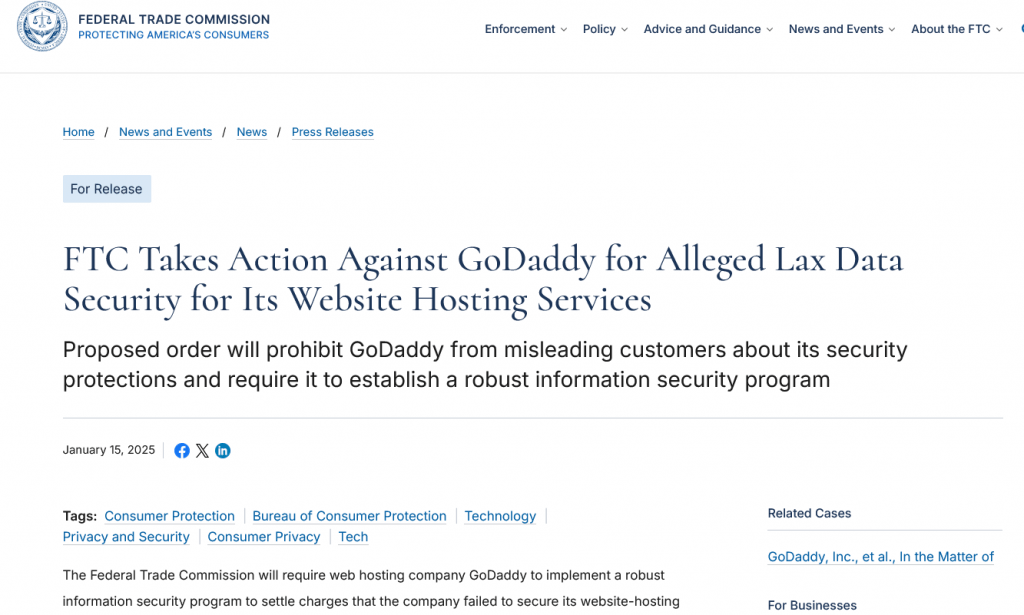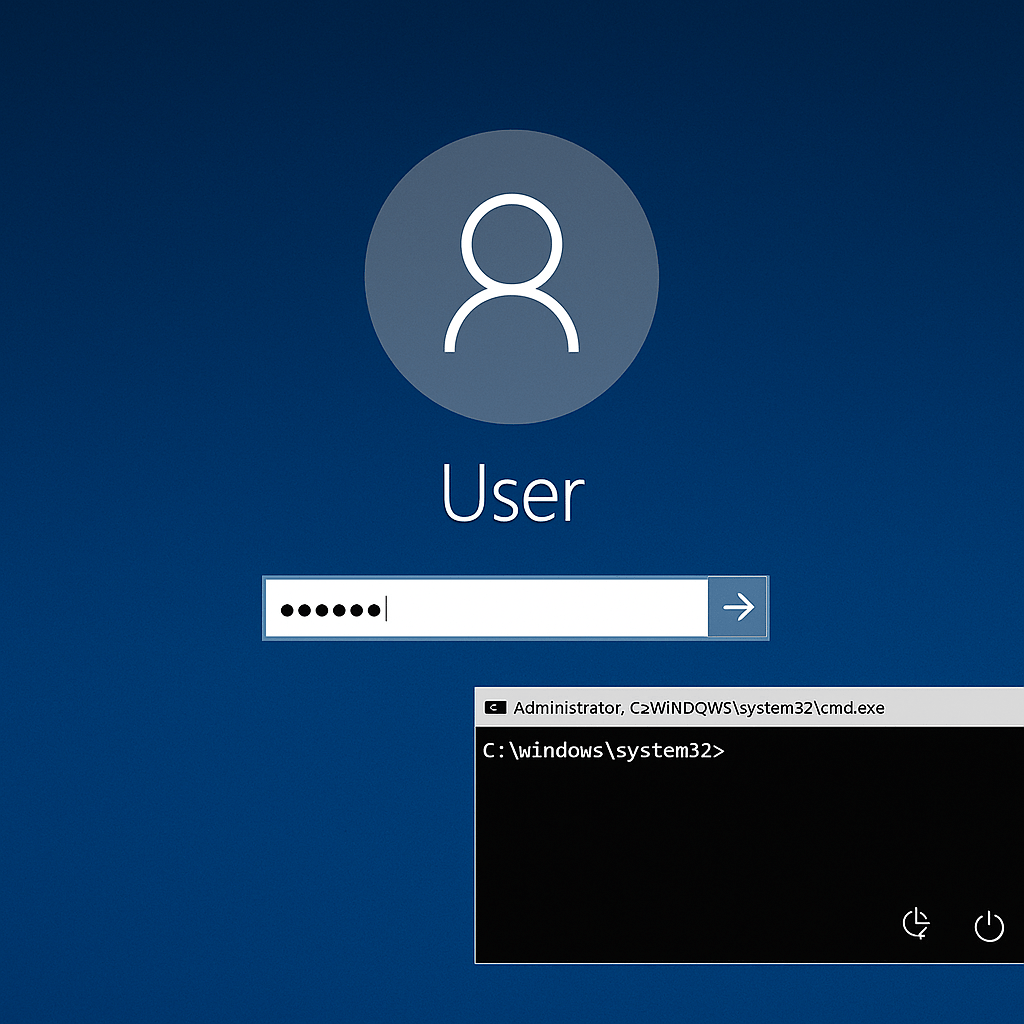In a world where small businesses depend on the digital frontier for survival, a shadow loomed large over one of the industry’s titans. GoDaddy, the once-revered web hosting giant, is now under the Federal Trade Commission’s (FTC) microscope, charged with years of neglect and poor security practices. The allegations are not just a blow to GoDaddy’s reputation but a stark reminder of the catastrophic consequences of lax cybersecurity.

The Breaches That Shook the Foundation
The alarm bells started ringing as early as 2018, but the crescendo reached its peak between 2019 and 2022. During this period, GoDaddy suffered multiple security breaches, each exposing critical vulnerabilities in its infrastructure and causing irreparable damage to customer trust.
- February 2023: A chilling revelation surfaced: attackers had infiltrated GoDaddy’s cPanel shared hosting environment. What followed was nothing short of a nightmare. The hackers not only exfiltrated source code but also embedded malware in a multi-year campaign first detected in December 2022.
- November 2021: Over 1.2 million Managed WordPress customers had their sensitive information compromised. Email addresses, WordPress admin passwords, sFTP and database credentials, and even SSL private keys were exposed. The scope of the breach left customers scrambling to rebuild their digital fortresses.
- March 2020: A brazen attacker exploited compromised web hosting credentials to connect via SSH, affecting 28,000 customers. It was a breach that underscored GoDaddy’s systemic vulnerabilities.
- 2018 Hack: Even before these incidents, GoDaddy was targeted in an attack that compromised its domain name system (DNS) services, redirecting traffic to malicious websites. Although the breach was contained, it exposed weaknesses in GoDaddy’s network infrastructure and response capabilities.
- 2017 Customer Phishing Incident: In 2017, GoDaddy’s internal email system was exploited in a phishing campaign targeting its customers. Attackers used spoofed emails to steal credentials, further tarnishing the company’s reputation for security.
- 2015 SSL Incident: In a separate yet related event, GoDaddy inadvertently issued thousands of incorrect SSL certificates, undermining the trust in its ability to manage secure communications. Although this was not an external attack, the fallout from this internal error highlighted significant lapses in quality control.
The FTC’s Litany of Complaints
As the breaches mounted, so did the scrutiny. The FTC’s complaint painted a damning picture of GoDaddy’s approach to cybersecurity, highlighting a series of glaring deficiencies:
- Absence of Multi-Factor Authentication (MFA): Despite being a cornerstone of modern cybersecurity, GoDaddy failed to implement MFA, leaving accounts vulnerable to unauthorized access.
- Poor Software Update Management: By neglecting to consistently apply software updates, GoDaddy allowed known vulnerabilities to fester, providing attackers with an open door.
- Lack of Security Event Logging: Without comprehensive logging, GoDaddy was flying blind, unable to detect and respond to incidents effectively.
- Inadequate Network Segmentation: The company’s failure to compartmentalize its network meant that once attackers gained a foothold, they could easily spread across systems.
- No File Integrity Monitoring: Critical system files were left unchecked, making it impossible to detect unauthorized changes in real time.
- Deficient Asset Management and Risk Assessment: Without an accurate inventory of assets or thorough risk assessments, GoDaddy’s security posture was, at best, rudimentary.
The Fallout: A Reckoning from the FTC
The FTC’s intervention marks a pivotal moment in the saga. Under the proposed settlement, GoDaddy is required to undertake a comprehensive overhaul of its security practices. The measures include:
- Establishing a Robust Information Security Program: GoDaddy must implement cutting-edge security protocols, including mandatory multi-factor authentication and HTTPS APIs, to safeguard its hosting services.
- Regular Independent Assessments: Biennial reviews by a third-party assessor will ensure that GoDaddy’s information security program remains up to par.
- Prohibiting Misleading Claims: The company can no longer make deceptive statements about its security practices to customers, a move aimed at rebuilding trust.
The Cost of Neglect
The story of GoDaddy serves as a cautionary tale for all businesses operating in the digital age. The company’s lax security measures did not just expose customer data; they eroded the trust that forms the bedrock of its relationship with millions of small businesses.
For years, GoDaddy stood as a beacon for entrepreneurs venturing online, promising reliability and security. But beneath the surface lay a house of cards, vulnerable to even the slightest gust of malicious intent.
A New Chapter?
The FTC’s mandate offers GoDaddy a chance at redemption—a chance to rebuild its systems, its reputation, and most importantly, its customers’ trust. But the road ahead is fraught with challenges. The company must not only comply with the settlement’s demands but also go above and beyond to demonstrate that it has learned from its mistakes.
Will GoDaddy rise from the ashes of its security failures, or will it remain a cautionary tale of corporate complacency in the face of evolving cyber threats? Only time will tell. For now, one thing is clear: the digital age demands vigilance, and those who fail to adapt risk being left behind—or worse, torn apart by the very ecosystem they helped create.

Information security specialist, currently working as risk infrastructure specialist & investigator.
15 years of experience in risk and control process, security audit support, business continuity design and support, workgroup management and information security standards.










